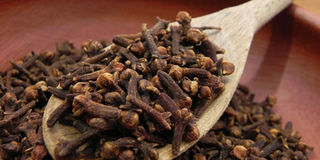Clove exports rise by $34m despite decrease in price

What you need to know:
A Bank of Tanzania economic review for November attributed the rise to an increase in exports to 6,817 tonnes from 1,907.2 tonnes during the period.
Dar es Salaam. Tanzania exported cloves worth $54 million in the year ending October 2016, up from $19.7 million in a similar period the previous year.
A Bank of Tanzania (BoT) economic review for November attributed the rise to an increase in exports to 6,817 tonnes from 1,907.2 tonnes during the period.
However, the commodity prices at the world market fell from $10,324.8 to $7,921.8 per tonne in the year ending October 2016, BoT has reported.
That happened because demand fell.
Zanzibar’s economy has largely been depending on cloves in the past 150 years. During the year ending October 2016, Isles’ imports of goods and services declined to $278.3 million from $349.6 million. Goods imports amounted to $234.9 million, down from $294.9 million recorded in the corresponding period in 2015, mainly due to a decline in imports of consumer goods, industrial raw materials and intermediate goods.
Tanzania’s exports of goods and services in the year ended October 2016 rose to $251.8 million from $151.9 million during the same period.
In October 2016, monthly average world market prices for the selected agricultural and non-agricultural commodities showed mixed developments. The prices of coffee, cotton, tea and oil increased while, that of cloves, sisal and gold declined.
Prices of coffee and cotton went up mainly due to high global demand. The prices of tea on average increased mainly due to low production in India following adverse weather.
The prices of cloves and sisal decreased mainly because the global demand weakened. The price of tea in Mombasa remained at $22.2 per kg. The prices of crude oil and white petroleum products went up largely due to a fall in crude oil inventories in the US and a rise in optimism that Organisation of Petroleum Exporting Countries will cut production.
As for gold, the price declined due a rise in speculation that the Federal Reserve will increase interest rate and hence reduce the demand for gold as a safe haven.




